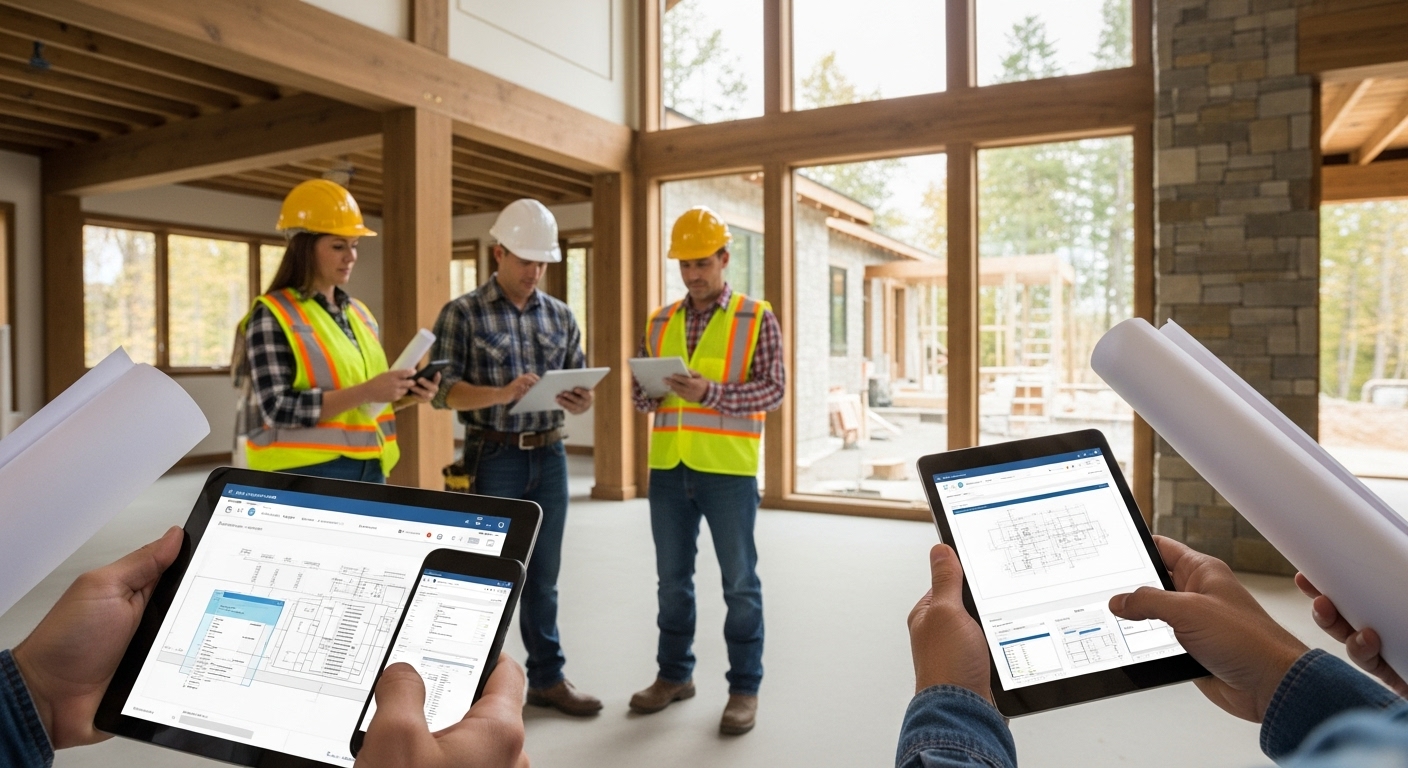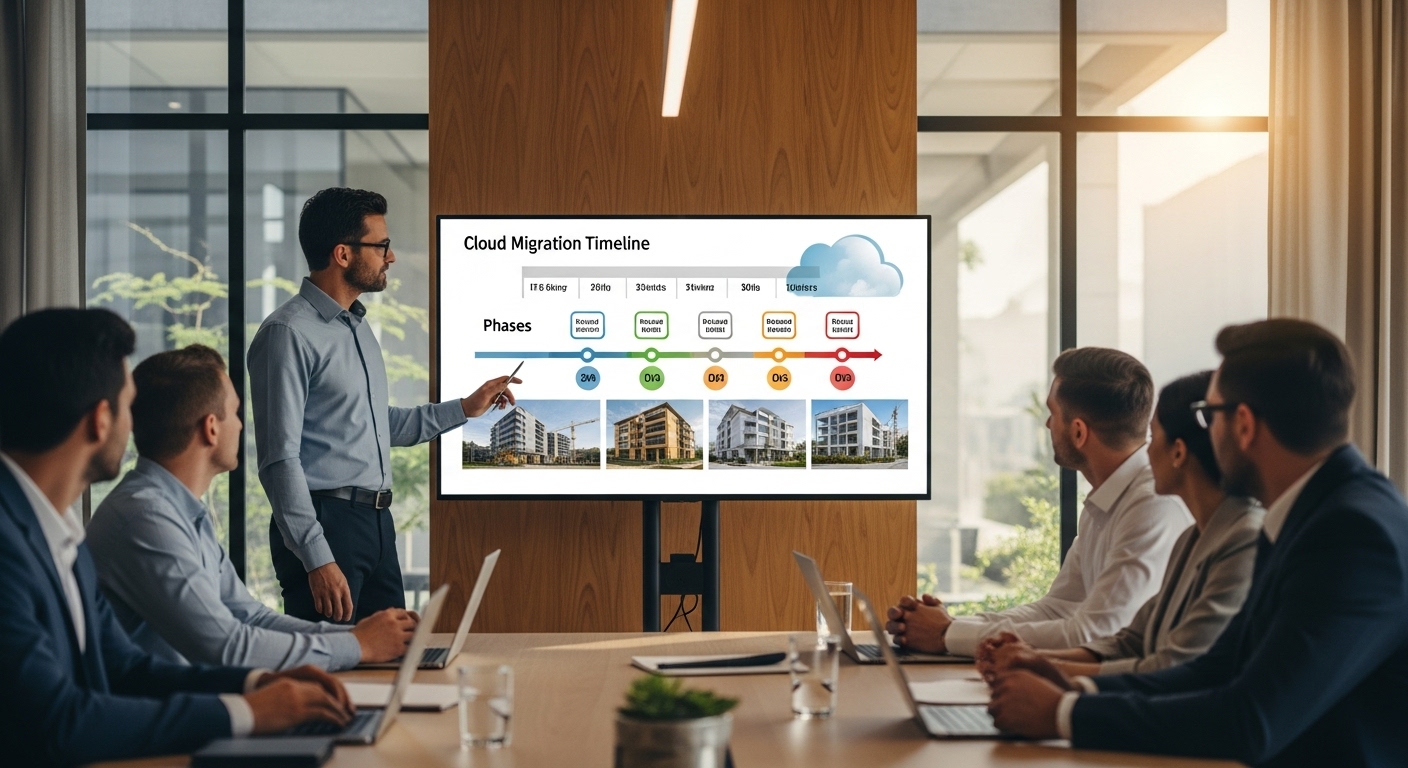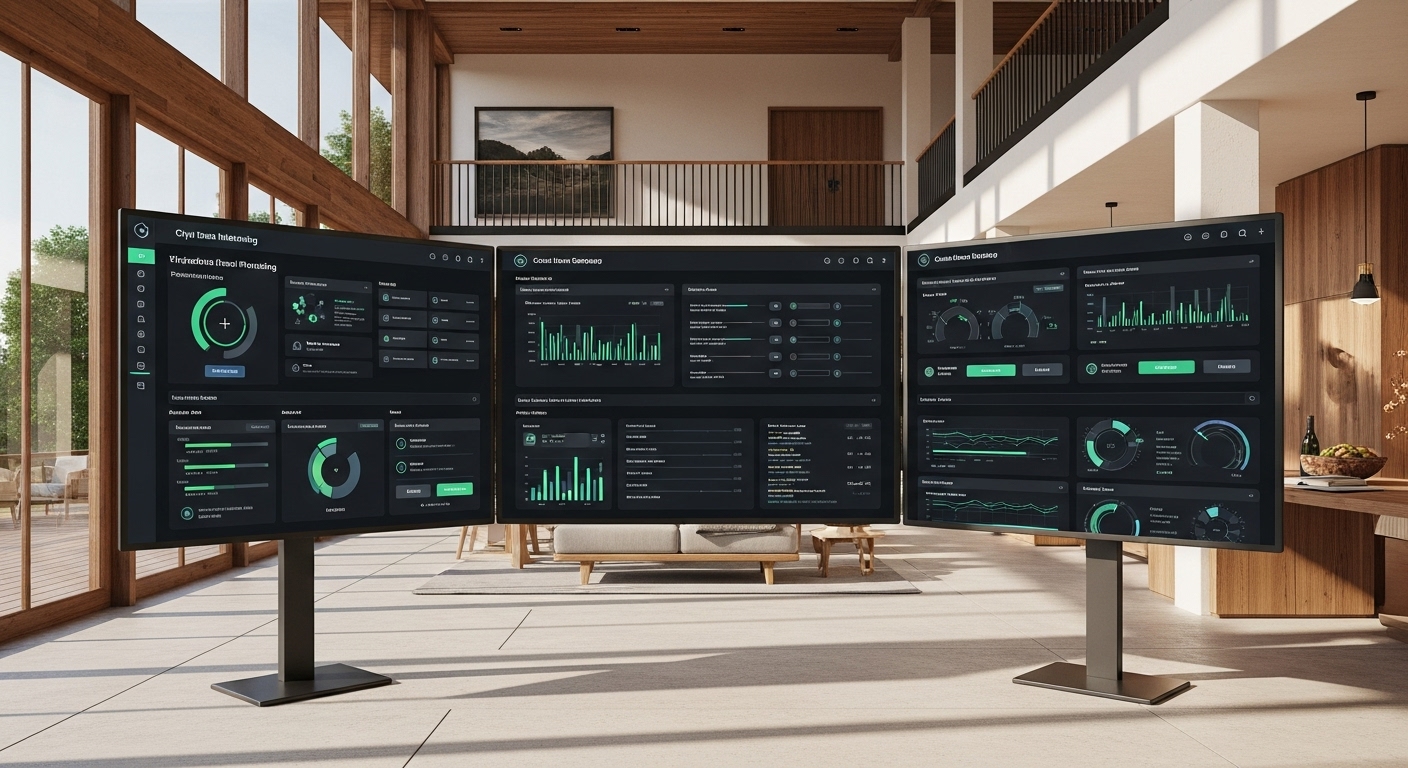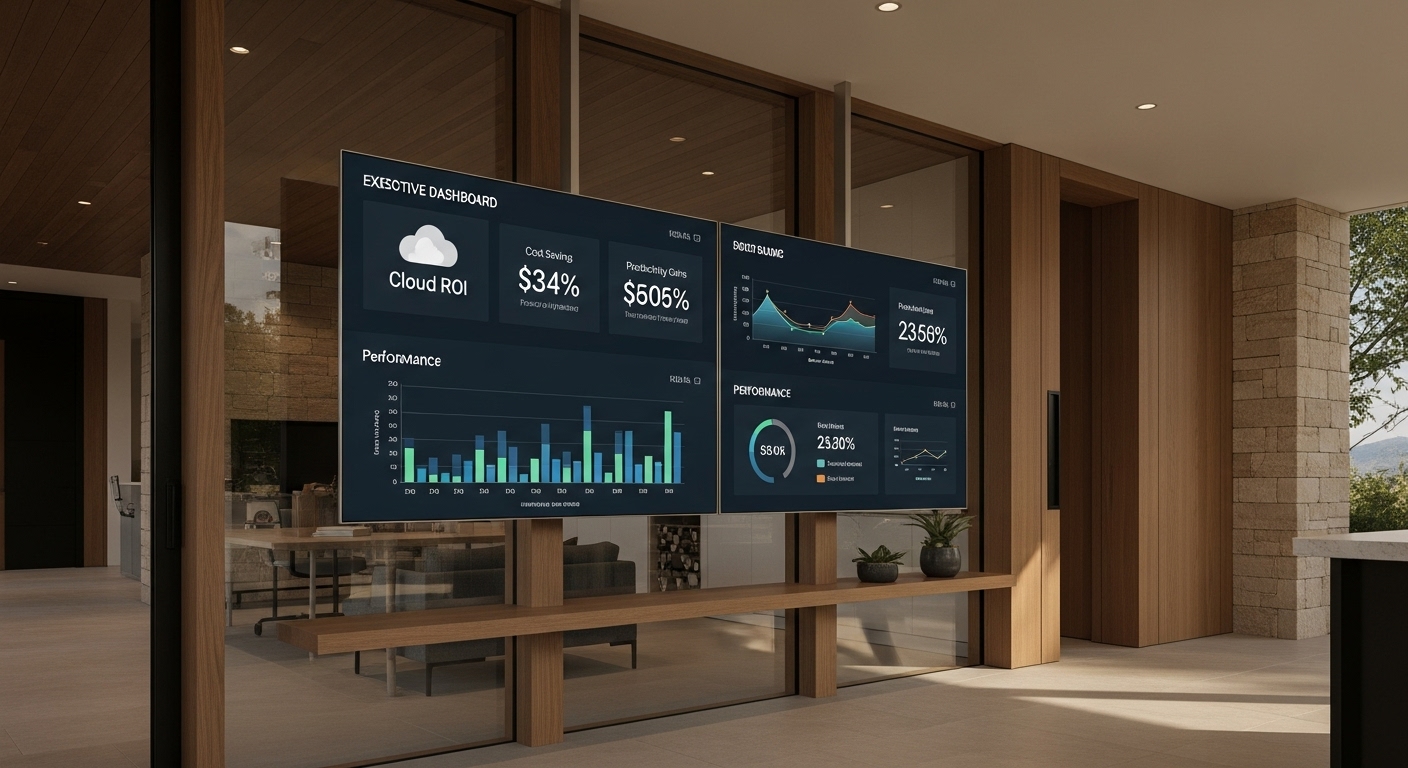August 14, 2025 by 100XBuilds Team
Cloud Technology for Builders: IT Infrastructure Guide

"We reduced project delivery time by 23% and cut IT costs by 40% within 18 months of cloud migration." - Regional Director, $12M luxury builder
The construction industry's digital transformation is no longer optional—it's survival. While 87% of Fortune 500 companies have adopted cloud-first strategies, only 34% of custom builders have modernized their IT infrastructure beyond basic email and accounting software.
This gap represents both a massive risk and an unprecedented opportunity. Luxury builders who embrace cloud technology today are positioning themselves to dominate tomorrow's market while their competitors struggle with outdated systems that can't scale.
The Hidden Cost of Legacy IT Infrastructure
Traditional IT setups are bleeding money from your bottom line in ways most builders never calculate. Consider these real costs:
Server maintenance and replacement: $15,000-$50,000 annually for mid-sized operations
IT staff overhead: $85,000+ per dedicated IT professional
Downtime losses: Average of $5,600 per hour during system failures
Data recovery expenses: $10,000-$100,000+ per major incident
Compliance violations: $50,000-$500,000 in potential fines for data breaches

One $8M builder in Austin calculated they were spending $127,000 annually just maintaining their on-premise servers—money that could have funded two additional project managers or a complete CRM overhaul.
Cloud Technology: The Strategic Advantage
Cloud infrastructure transforms your IT from a cost center into a competitive weapon. Here's how leading builders are leveraging cloud technology:
Scalability That Matches Growth
Traditional servers require massive upfront investments and often sit underutilized. Cloud resources scale instantly with demand.
Real-world example: A luxury builder in Denver expanded from 12 to 35 active projects in one year. Their cloud infrastructure automatically scaled to handle the increased data load without any hardware purchases or downtime.
Cost comparison:
- Traditional scaling: $75,000 upfront server investment
- Cloud scaling: $2,400 monthly increase (only when needed)
Enhanced Collaboration and Mobility
Modern construction requires seamless collaboration between architects, contractors, clients, and internal teams. Cloud platforms enable real-time access to project data from any location.

Productivity metrics from cloud adoption:
- 31% reduction in project communication delays
- 45% faster approval processes
- 67% improvement in field-to-office information flow
Disaster Recovery and Business Continuity
Natural disasters, cyber attacks, and hardware failures can devastate traditional IT setups. Cloud infrastructure provides automatic backups and instant recovery capabilities.
Case study: When Hurricane Harvey hit Houston, one luxury builder's cloud-based systems allowed them to continue operations remotely while competitors with on-premise servers faced weeks of downtime. They captured $2.3M in additional contracts during the recovery period.
Strategic Cloud Migration Framework
Successful cloud adoption requires a systematic approach tailored to construction workflows:
Phase 1: Assessment and Planning (Months 1-2)
Infrastructure audit: Document current systems, dependencies, and performance metrics
Cost-benefit analysis: Calculate total cost of ownership for current vs. cloud solutions
Risk assessment: Identify potential migration challenges and mitigation strategies
Vendor evaluation: Compare cloud providers based on construction-specific needs
Phase 2: Foundation Migration (Months 3-4)
Start with non-critical systems to build confidence and expertise:
Email and communication: Microsoft 365 or Google Workspace migration
File storage and sharing: Transition to cloud-based document management
Basic applications: Move accounting and project management tools

Phase 3: Core System Integration (Months 5-8)
Project management platforms: Implement cloud-based construction management software
Customer relationship management: Deploy CRM systems with mobile access
Financial systems: Migrate accounting and job costing to cloud platforms
Document management: Establish centralized, searchable project repositories
Phase 4: Advanced Capabilities (Months 9-12)
Business intelligence: Implement analytics and reporting dashboards
Automation tools: Deploy workflow automation and approval processes
Integration platforms: Connect disparate systems through cloud APIs
Mobile applications: Enable field teams with construction-specific mobile tools
Security: Addressing the Primary Concern
Security concerns top the list of cloud adoption barriers for builders. However, cloud platforms often provide superior security compared to traditional setups:
Enterprise-Grade Security Features
Multi-factor authentication: Prevents 99.9% of automated attacks
Encryption at rest and in transit: Protects data throughout its lifecycle
Regular security updates: Automatic patching eliminates vulnerability windows
Compliance certifications: SOC 2, ISO 27001, and industry-specific standards
Access Control and Monitoring
Role-based permissions: Limit access based on job functions and project needs
Audit trails: Complete logging of all system access and changes
Real-time monitoring: Immediate alerts for suspicious activities
Geographic restrictions: Limit access based on location parameters

Security improvement metrics post-cloud migration:
- 78% reduction in security incidents
- 92% faster threat detection and response
- 100% elimination of unpatched vulnerabilities
- 65% reduction in security management overhead
Cost Optimization Strategies
Cloud costs can spiral without proper management. Implement these strategies to maximize ROI:
Right-Sizing Resources
Regular usage audits: Monthly reviews of resource utilization
Auto-scaling policies: Automatic adjustment based on demand patterns
Reserved instances: Long-term commitments for predictable workloads
Spot instances: Cost-effective options for non-critical processing
Financial Management Tools
Cost allocation tags: Track expenses by project, department, or client
Budget alerts: Automatic notifications when spending thresholds are reached
Usage analytics: Detailed reporting on resource consumption patterns
Optimization recommendations: AI-driven suggestions for cost reduction
Measuring Success: Key Performance Indicators
Track these metrics to validate your cloud investment:
Operational Efficiency
System uptime: Target 99.9% availability (8.76 hours downtime annually)
Response times: Application performance benchmarks
User productivity: Time savings in daily workflows
Project delivery speed: Reduction in overall project timelines
Financial Performance
Total cost of ownership: Compare pre and post-migration expenses
IT staff productivity: Measure time spent on maintenance vs. strategic initiatives
Revenue per employee: Track productivity improvements
Customer satisfaction scores: Monitor client experience improvements

Innovation Metrics
New capability deployment speed: Time to implement new tools and features
Integration success rate: Percentage of successful system connections
Mobile adoption rates: Field team usage of mobile applications
Data-driven decision frequency: Increase in analytics-based choices
Future-Proofing Your Technology Stack
Cloud adoption positions your business for emerging technologies:
Artificial Intelligence Integration
Predictive analytics: Forecast project risks and resource needs
Automated scheduling: AI-optimized project timelines and resource allocation
Quality control: Computer vision for construction progress monitoring
Customer service: Chatbots and automated communication systems
Internet of Things (IoT) Connectivity
Smart building systems: Connected devices for energy management and security
Equipment monitoring: Real-time tracking of tool and machinery performance
Environmental sensors: Automated monitoring of job site conditions
Wearable technology: Safety and productivity tracking for field teams
Advanced Collaboration Tools
Virtual reality: Immersive client presentations and design reviews
Augmented reality: On-site visualization of plans and modifications
Digital twins: Virtual replicas of buildings for ongoing management
Blockchain integration: Secure, transparent contract and payment processing
Implementation Best Practices
Change Management Strategy
Executive sponsorship: Ensure leadership commitment and resource allocation
Training programs: Comprehensive education for all user levels
Phased rollouts: Gradual implementation to minimize disruption
Success celebrations: Recognize achievements and build momentum
Vendor Relationship Management
Service level agreements: Clear performance expectations and penalties
Regular reviews: Quarterly assessments of provider performance
Escalation procedures: Defined processes for issue resolution
Strategic partnerships: Long-term relationships with key technology providers

The Competitive Advantage Timeline
Builders who delay cloud adoption face increasing competitive disadvantages:
Year 1: Early adopters gain operational efficiency and cost advantages
Year 2: Technology gaps become apparent in client presentations and project delivery
Year 3: Legacy systems become liability for talent acquisition and retention
Year 4: Compliance and security requirements make modernization mandatory
Year 5: Market leaders emerge with AI and IoT capabilities built on cloud foundations
Taking Action: Your Next Steps
The window for competitive cloud adoption is narrowing. Market leaders are already leveraging these technologies to win more projects, deliver faster results, and achieve higher margins.
Start your cloud transformation today with a comprehensive infrastructure assessment. Identify quick wins that can demonstrate immediate value while building the foundation for long-term competitive advantage.
Don't let outdated technology limit your growth potential. The builders who modernize their IT infrastructure now will dominate the luxury construction market for the next decade.
Ready to transform your IT infrastructure and unlock your competitive advantage? Contact our construction technology specialists for a complimentary cloud readiness assessment and customized migration strategy.
